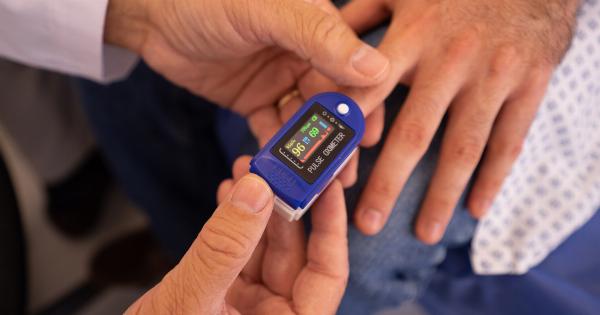Living with diabetes requires careful management and constant monitoring of blood sugar levels. Failure to do so can lead to various complications that can significantly impact a person’s health and quality of life.
Diabetic complications are the long-term consequences of uncontrolled diabetes, including both type 1 and type 2 diabetes. These complications can affect multiple organ systems and may arise due to prolonged high blood sugar levels, inadequate diabetes management, or other factors.
In this article, we will explore some of the most common diabetic complications and their potential effects on individuals.
1. Diabetic Retinopathy
Diabetic retinopathy is a complication that affects the eyes and is one of the leading causes of blindness in adults. Prolonged high blood sugar levels can damage the tiny blood vessels in the retina, the light-sensitive tissue at the back of the eye.
This can lead to vision problems, including blurred vision, difficulty seeing at night, and even complete loss of vision if left untreated. Regular eye examinations and managing blood sugar levels are crucial in preventing and managing diabetic retinopathy.
2. Diabetic Neuropathy
Diabetic neuropathy is a condition that affects the nerves, causing numbness, pain, and tingling sensations, typically in the hands and feet.
Prolonged exposure to high blood sugar levels can damage the nerves throughout the body, leading to various complications. Symptoms of diabetic neuropathy may include loss of sensation, muscle weakness, and problems with coordination.
Proper blood glucose control, regular physical activity, and medications can help manage symptoms and slow down the progression of diabetic neuropathy.
3. Diabetic Nephropathy
Diabetic nephropathy, also known as diabetic kidney disease, is a serious complication that affects the kidneys.
Prolonged high blood sugar levels can damage the small blood vessels in the kidneys, impairing their ability to filter waste and excess fluids from the body. Over time, this can lead to kidney failure, requiring dialysis or kidney transplantation.
Close monitoring of blood pressure, blood glucose levels, and regular check-ups with a healthcare professional are essential for preventing and managing diabetic nephropathy.
4. Diabetic Foot Ulcers
Diabetic foot ulcers are a common complication of diabetes, particularly in individuals with poor blood glucose control and reduced blood flow to the extremities. High blood sugar levels can impair wound healing and increase the risk of infections.
Foot ulcers can develop due to small injuries or cuts that do not heal properly. If left untreated, these ulcers can lead to serious infections and, in severe cases, may require amputation.
Proper foot care, including regular inspection, keeping feet clean and dry, and wearing appropriate footwear, can help prevent diabetic foot ulcers.
5. Cardiovascular Complications
Diabetes significantly increases the risk of developing cardiovascular problems, such as heart disease, stroke, and peripheral vascular disease.
High blood sugar levels can contribute to the build-up of fatty deposits in the blood vessels, reducing blood flow and increasing the risk of blockages. Managing blood pressure, cholesterol levels, and blood glucose levels is essential for reducing the risk of cardiovascular complications associated with diabetes.
6. Diabetic Gastroparesis
Gastroparesis is a condition that affects the normal movement of food through the digestive system.
In individuals with diabetes, high blood sugar levels can damage the nerves controlling the stomach muscles, resulting in delayed emptying of the stomach. Symptoms of diabetic gastroparesis may include nausea, vomiting, bloating, heartburn, and variations in blood sugar levels. A combination of dietary modifications, medications, and insulin adjustments can help manage the symptoms of gastroparesis.
7. Diabetic Dermopathy
Diabetic dermopathy is a common skin condition that manifests as light brown, scaly patches on the skin, typically on the shins.
Although the exact cause of this condition is unknown, it is believed to be related to changes in blood flow and damage to the small blood vessels. Diabetic dermopathy poses no serious health risks, and treatment is focused on managing blood sugar levels effectively.
8. Diabetic Cardiomyopathy
Diabetic cardiomyopathy is a type of heart disease that affects individuals with diabetes. Prolonged high blood sugar levels can damage the heart muscle, leading to improper functioning and reduced ability to pump blood effectively.
This can result in symptoms such as shortness of breath, fatigue, and swelling in the legs and ankles. Managing blood sugar levels, cholesterol, blood pressure, and leading a heart-healthy lifestyle are crucial for preventing and managing diabetic cardiomyopathy.
9. Diabetic Amputation
In severe cases of diabetic foot ulcers, infections can spread deeper into the tissues and bones, leading to gangrene.
If gangrene cannot be treated effectively, amputation may be necessary to prevent the spread of infection and save the individual’s life. Preventing diabetic foot ulcers through proper foot care and regular check-ups can significantly reduce the risk of amputations.
10. Diabetic Ketoacidosis
Diabetic ketoacidosis (DKA) is a potentially life-threatening complication that primarily affects individuals with type 1 diabetes but can also occur in individuals with type 2 diabetes under certain conditions.
DKA develops when the body does not have enough insulin to use glucose for energy, resulting in the breakdown of fat cells and the production of toxic ketones. Symptoms of DKA include excessive thirst, frequent urination, nausea, vomiting, abdominal pain, and confusion. Immediate medical attention and treatment with fluids and insulin are necessary to prevent severe complications.























